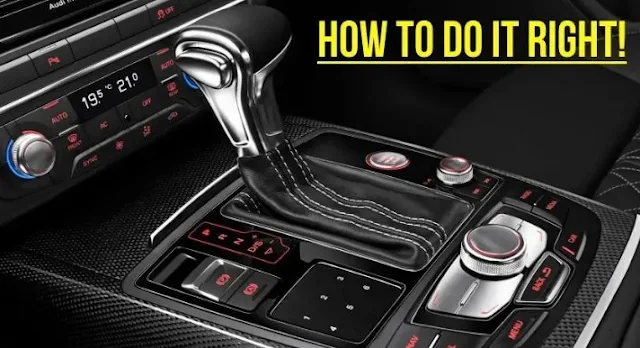List of Mistakes in Driving an Automatic Car that Cause the Transmission to Overheat and Damage Quickly
Car users in urban areas prefer to drive automatic or automatic transmission cars because they are more practical and comfortable. You no longer need to bother pressing the clutch pedal, especially when dealing with congested roads.
The problem is, there are still many mistakes that are often made which have a negative effect on the car and driving safety. There are at least eight mistakes that automatic car drivers often encounter that must be eliminated.
1. Transmission Position in D While Waiting for the Red Light
By positioning the lever in D, the torque converter continues to work in making the connection between the engine and transmission. However, the engine and environmental conditions are definitely very hot and will affect the lifespan of the transmission oil.
Don't forget, pressing the brake pedal will make the brake pads hot and can cause overheating. It is also feared that when the driver is tired, the brake pressure decreases, the car will run and hit the car in front of it. Just put the gear in N and pull the parking brake lever while waiting for the red light.
2. Two feet to step on the brake pedal and gas pedal
Your left foot is not used to pressing the brake pedal, resulting in the feeling not being recorded properly. As a result, you may brake too hard or not even hard enough, which can cause an accident.
Apart from that, this treatment is dangerous because it becomes difficult to control the vehicle and causes the brake pads to wear out quickly because the left foot will unconsciously step on the brake pedal when the car is moving. Just use your right foot to step on both pedals.
3. Transmission position is always in D or L
You can combine transmission positions D and L according to road conditions. If you always use L, the transmission clutch will get hot because the gear position is stuck in 1st all the time. However, the L position or other low gears such as 2, 3 and 4 are effective in reducing the car's speed on downhill roads.
Meanwhile, if you always stay in D, especially when going down steep and long descents, it will reduce the engine braking effect so that the car glides quickly. In a situation like this, the risk of an accident is very large because the brakes malfunction, aka fail.
4. Not being careful when moving the transmission lever
For example, when you want to reverse the car you put it in D gear, or vice versa, it goes into R even though you want to go forward. Plus the habit of rushing, it is very likely to cause an accident. It's clearly dangerous because there have been incidents of cars falling from parking buildings because they put the transmission in the wrong gear.
Therefore, take the time to look at the transmission lever to make sure you have entered the correct position. You can also get into the habit of looking at the transmission gear position when driving on the road, or looking at the gear position indicator on the instrument panel so as not to divert attention from the road.
5. Towing the car but the driving tire is not hanging
There are still many people who tow automatic cars with the drive tires not lifted or hanging. When the engine stops, the transmission oil pump automatically stops so there is no circulation. This condition can cause components in the transmission to be damaged because they are forced to run without lubrication.
In addition, the automatic transmission clutch is always connected to the engine which transmits rotation from the wheels to the engine. Even though the engine oil also doesn't work because the engine is dead. That's why it's safest for a broken down car to be put in a towing car or towing car.
6. Forgetting to press the brake pedal when starting the engine
For safety reasons, an automatic car engine cannot be started if you do not press the brake pedal to avoid the car jumping. Apart from pressing the brake pedal, always make sure the lever is in P before starting the engine.
7. Parallel Parking in Position P
This behavior prevents your car from being pushed when the blocked car is leaving the parking location. Therefore, move the transmission lever to N by first pressing the shift lock lever. Release the parking brake lever while ensuring the car does not move.
8. Forgetting to change automatic transmission oil according to schedule
Automatic transmission oil has 2 important functions that you must understand. The first is to control the work of the torque converter as one of the main components. Apart from also lubricating moving components in the automatic transmission system.
Oil is also responsible for releasing heat from moving components in the automatic transmission. Therefore, once there is a problem with the automatic oil, the transmission's work will immediately be disrupted and the damage will spread to various components.
It is best to change the automatic transmission oil at an authorized Toyota repair shop every 40,000 km or 2 years, depending on usage conditions. Use TMO automatic transmission oil because it is made according to Toyota engine specifications and needs.

